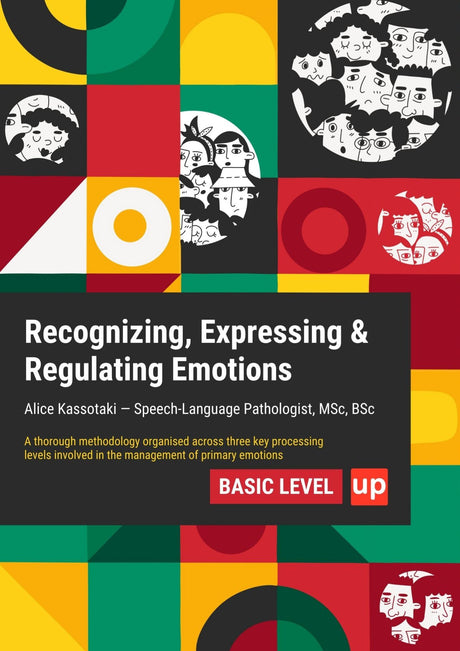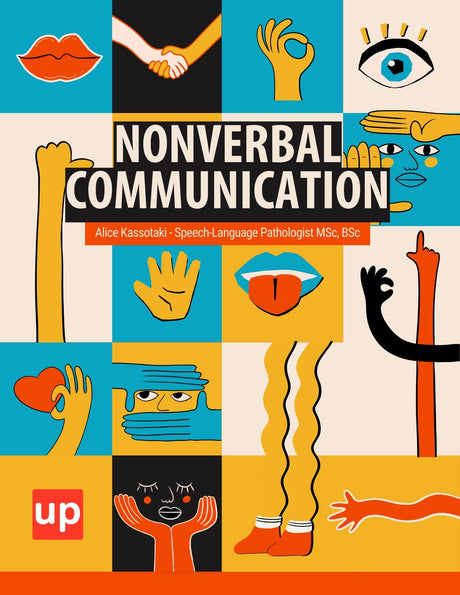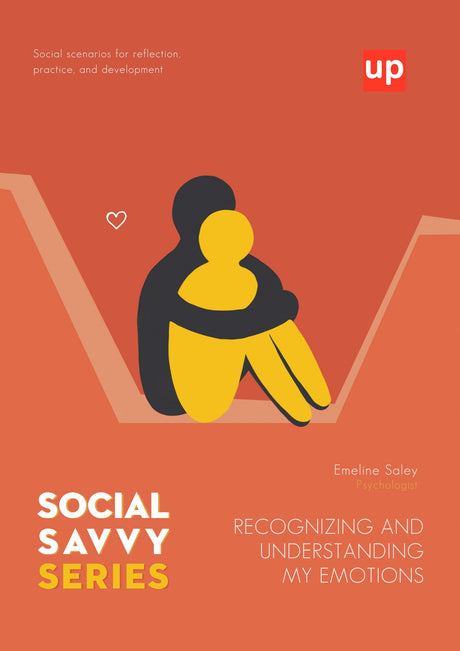Do you ever experience sudden, unwanted thoughts about harming yourself or someone else? These intrusive thoughts can be terrifying, leaving you filled with guilt, shame, and intense anxiety. While disturbing, having these thoughts does not make you a bad person. For many, they are a primary symptom of a specific subtype of Obsessive-Compulsive Disorder (OCD) known as Harm OCD. This condition is more common than you might think, with approximately 1.2% of adults in the United States having been diagnosed with OCD. Understanding the nature of these thoughts is the first step toward managing them. This article and the accompanying self-assessment quiz are designed to provide clarity, helping you recognize the patterns of Harm OCD and guiding you toward effective support.
Key Points
- Harm OCD involves intrusive, unwanted harm thoughts that cause significant distress but do not reflect actual intentions to cause harm.
- The cycle of obsessions and compulsions in Harm OCD can severely impact daily activities, relationships, and overall well-being, making professional assessment and treatment essential.
- Effective OCD treatment, including therapy with a licensed mental health professional and possibly medication, can help manage symptoms and improve quality of life.
Understanding Harm OCD: More Than Just "Bad Thoughts"

Harm OCD is a form of Obsessive-Compulsive Disorder marked by persistent, unwanted intrusive thoughts, images, or urges about causing harm. The core of this mental health condition isn't a desire to act on these thoughts—it's the profound fear that you might. This fear generates significant anxiety and distress, which the individual then attempts to neutralize through compulsions or repetitive behaviors.
Unlike fleeting "weird thoughts" that most people experience and dismiss, the obsessions in Harm OCD are sticky. They feel significant and dangerous, leading individuals to question their own character and safety. The condition can be debilitating, as half of all adults with OCD (50.6%) report serious impairment in their daily functioning. The critical distinction is that people with Harm OCD are deeply disturbed by their thoughts and go to great lengths to prevent them from coming true, which is the opposite of someone who genuinely intends harm.
The Harm OCD Quiz: Your First Step Towards Clarity

An OCD test can be a valuable tool for self-reflection. It helps structure your experiences, allowing you to identify patterns that may align with the symptoms of Harm OCD. This quiz is designed to help you examine the nature of your thoughts, your emotional responses, and the behaviors you use to cope.
Purpose of the Quiz: What It Measures and Why It Matters
This self-assessment tool focuses on the core components of Harm OCD. It measures the frequency and intensity of your intrusive thoughts about harm, the level of distress and anxiety these obsessions cause, and the presence of specific compulsions you might perform to find relief. These compulsions can include mental rituals like repeating phrases, behavioral actions like checking on loved ones, or seeking constant reassurance. The goal is to provide a structured overview of your symptoms, giving you a clearer picture of your mental health challenges.
How to Take the Test: Guidance for Accurate Self-Reflection
To get the most accurate insight from a self-assessment, answer honestly. Reflect on your experiences over the past several weeks or months. Don't judge your thoughts or behaviors; simply acknowledge them as they are. Consider the real impact they have on your daily life, relationships, and emotional well-being. The purpose isn't to judge but to understand. Be thoughtful and give yourself the space to consider each question without rushing.
Important Disclaimer: This Quiz is Not a Diagnosis
This quiz is an educational screening tool, not a substitute for a professional diagnosis. Only a qualified mental health professional can accurately diagnose Obsessive-Compulsive Disorder or any other condition. The results are intended to help you identify potential symptoms and facilitate a more informed conversation with a therapist or doctor. Think of it as a starting point for a journey toward understanding and getting the right support.
Interpreting Your Quiz Results: What Do Your Symptoms Mean?
After reflecting on your experiences, you can begin to interpret the patterns. The goal is to move from confusion and fear toward clarity and actionable next steps.
Instructions
For each of the following statements, rate how often the experience applies to you using the scale below:
- 0 = Never
- 1 = Rarely
- 2 = Sometimes
- 3 = Often
- 4 = Almost Always
Try to respond as honestly as possible based on your thoughts, feelings, and behaviors over the past several weeks or months. This quiz is designed to promote self-awareness and is not a substitute for professional diagnosis.
Questions
- I experience sudden, intrusive thoughts or images of harming myself or others.
- These thoughts cause me significant fear, guilt, or anxiety.
- I avoid certain people, objects, or situations to prevent acting on a harmful thought.
- I feel the need to check repeatedly that I haven’t hurt someone, even if I logically know I haven’t.
- I mentally repeat phrases, pray, or perform rituals to cancel out a disturbing thought.
- I ask for reassurance from others (e.g., “Do you think I’m dangerous?” or “You’re okay, right?”).
- I fear I might lose control and hurt someone, even though I don’t want to.
- I spend time reviewing past actions to make sure I didn’t harm someone accidentally.
- These thoughts interfere with my daily activities or relationships.
- I feel deeply ashamed or afraid of what these thoughts say about who I am.
Scoring Guide
To calculate your score, add up the numbers from all 10 responses.
-
0–10: Low likelihood
Your symptoms may not align with Harm OCD. Occasional intrusive thoughts are common and not necessarily a sign of a disorder. -
11–20: Mild symptom presence
You may be experiencing some symptoms associated with Harm OCD. If these thoughts cause distress, further exploration could be helpful. -
21–30: Moderate symptom range
Your score suggests recurring distress related to harm-related obsessions. Consider speaking with a licensed therapist for further assessment. -
31–40: High likelihood of Harm OCD
Your experiences strongly align with symptoms of Harm OCD. Professional evaluation is recommended to explore diagnosis and treatment options.
Understanding Your Score: A Guide to Potential Indicators
A higher score on a Harm OCD test typically suggests that your symptoms are more frequent, cause greater distress, and have a more significant impact on your life. This may indicate that your experiences align with the clinical picture of Harm OCD. Key indicators include:
- Frequent, unwanted thoughts or images of violence or harm.
- Intense fear that you will lose control and act on these thoughts.
- Spending a significant amount of time trying to suppress or neutralize these thoughts.
- Engaging in repetitive behaviors (compulsions) to reduce your anxiety.
Recognizing Harm OCD Patterns: Obsessions, Compulsions, and Distress
The hallmark of OCD is the cycle of obsessions and compulsions. For Harm OCD, this looks like:
- Obsession: An intrusive thought or image appears (e.g., a thought of pushing someone near traffic).
- Distress: This thought triggers intense anxiety, guilt, and fear. You question, "Why would I think that? Am I a dangerous person?"
- Compulsion: You perform a mental or physical act to relieve the anxiety. This could be checking to make sure the person is safe, mentally repeating "I would never do that," avoiding busy streets, or seeking reassurance from others that you are a good person.
- Temporary Relief: The compulsion provides a brief sense of relief, but it reinforces the idea that the initial thought was dangerous, making the cycle more likely to repeat.
Differentiating "Normal" Intrusive Thoughts from OCD
Nearly everyone has occasional, bizarre, or violent thoughts that pop into their head. The difference lies in the reaction. A person without OCD might think, "Wow, that was a weird thought," and move on. A person with Harm OCD latches onto the thought, assigning it immense meaning and danger. They experience severe anxiety and feel compelled to perform rituals to ensure safety. The thoughts in OCD are more persistent, distressing, and time-consuming.
Seeking Professional Support for Harm OCD

Self-assessment is a helpful first step, but professional guidance is necessary for recovery. Effective treatments are available, and seeking help is a sign of strength.
When to Connect with a Mental Health Professional
If your intrusive thoughts and related behaviors are causing significant distress, consuming more than an hour of your day, or interfering with your work, school, or relationships, it is time to seek support. You do not have to wait for your symptoms to become severe. A mental health professional can provide a safe space to discuss your fears without judgment.
The Diagnostic Process for OCD
A diagnosis is made by a qualified professional, such as a psychologist, psychiatrist, or licensed therapist. The process involves a comprehensive clinical interview where you will discuss your symptoms, their duration, and their impact on your life. The clinician will apply the criteria outlined in the Diagnostic and Statistical Manual of Mental Disorders (DSM-5) to assess whether your experiences meet the standards necessary for an OCD diagnosis.
Effective Treatment Approaches for Harm OCD
The most effective treatment for OCD is a form of cognitive-behavioral therapy known as Exposure and Response Prevention (ERP). In ERP, a therapist guides you in gradually confronting the thoughts, images, and situations that trigger your obsessions (exposure) while refraining from engaging in your usual compulsions (response prevention). This process helps you learn that you can tolerate the anxiety without resorting to rituals, and over time, the anxiety diminishes. Medication, particularly SSRIs, can also be an effective part of a treatment plan.
Living with Harm OCD: Managing Symptoms and Building Resilience
Recovery is not just about reducing symptoms; it's about building a fulfilling life.
Practical Strategies for Managing Intrusive Thoughts
Beyond professional treatment, mindfulness techniques can help you learn to observe your thoughts without judgment. Instead of fighting a thought, you can practice labeling it ("There's an intrusive thought") and letting it pass without engaging. Self-compassion is also vital; remind yourself that having these thoughts does not define your character.
Building a Support System
Connecting with trusted friends, family, or support groups can reduce feelings of isolation. Sharing your experience with people who understand can be incredibly validating. Educating your loved ones about Harm OCD can help them understand how best to support you—for example, by not providing excessive reassurance, which can fuel compulsions.
Maintaining Hope and Long-Term Well-being
Recovery from Harm OCD is possible. With consistent treatment and self-management strategies, you can regain control over your life. There will be good days and challenging days, but long-term well-being is an achievable goal. Celebrate small victories and remember that managing a mental health condition is a journey, not a destination.
Conclusion: Taking Charge of Your Mental Health
Understanding Harm OCD is the first, most powerful step toward reclaiming your peace of mind. Your intrusive thoughts are a symptom of a treatable condition, not a reflection of your character. By using tools like this quiz for self-reflection, you can gain clarity and find the courage to seek a professional diagnosis. Effective treatments like Exposure and Response Prevention (ERP) can break the cycle of obsessions and compulsions. Take the next step today by reaching out to a mental health professional who specializes in OCD. You deserve support, and a life free from fear is within your reach.
Frequently Asked Questions (FAQ)
What is Harm OCD?
Harm OCD is a form of Obsessive-Compulsive Disorder characterized by persistent, intrusive, and unwanted thoughts or images about causing harm to oneself or others.These thoughts cause significant distress but do not reflect actual intentions to cause harm.
How is Harm OCD different from normal intrusive thoughts?
While everyone experiences occasional unwanted thoughts, Harm OCD involves persistent, distressing obsessions that lead to compulsive behaviors to reduce anxiety. People with Harm OCD assign excessive meaning to these thoughts and often feel overwhelmed by them.
Can I diagnose myself with this quiz?
No, this quiz is a screening tool designed to help you recognize potential symptoms of Harm OCD. Only a qualified mental health professional can provide an accurate diagnosis through a comprehensive OCD assessment.
What types of compulsions are common in Harm OCD?
Compulsions may include mental rituals such as repeating phrases to rid yourself of unpleasant thoughts, checking behaviors, seeking reassurance, or avoiding certain people, places, or objects that trigger harm thoughts.
When should I seek professional help?
If your intrusive thoughts and related compulsive behaviors cause significant distress, interfere with your daily life, or consume a lot of your time, it is important to consult a licensed mental health provider for an accurate assessment and treatment.
What treatments are effective for Harm OCD?
The most effective treatment is cognitive-behavioral therapy, specifically Exposure and Response Prevention (ERP), often combined with medication such as SSRIs. A mental health professional can guide you through these options.
Can Harm OCD be cured?
While there is no instant cure, with appropriate treatment and support, many people manage their symptoms successfully and lead fulfilling lives.
Is it common to have mental compulsions?
Yes, mental compulsions like repeating phrases or counting are common in Harm OCD and can be harder to recognize than physical compulsions.
How can I support a loved one with Harm OCD?
Educate yourself about the condition, offer understanding without judgment, avoid enabling reassurance-seeking behaviors, and encourage them to seek professional help.
Are intrusive thoughts about harming innocent strangers a sign of Harm OCD?
Yes, obsessions about causing harm to innocent strangers are a common symptom of Harm OCD and can cause significant anxiety.
Original content from the Upbility writing team. Reproducing this article, in whole or in part, without credit to the publisher is prohibited.
References
-
Abramowitz, J. S., Taylor, S., & McKay, D. (2009). Obsessive-compulsive disorder. The Lancet, 374(9688), 491-499. https://doi.org/10.1016/S0140-6736(09)60240-3
-
American Psychiatric Association. (2013). Diagnostic and Statistical Manual of Mental Disorders (5th ed.). Arlington, VA: American Psychiatric Publishing.
-
Foa, E. B., & Kozak, M. J. (1996). Psychological treatment for obsessive-compulsive disorder. In J. D. Maser & C. R. Cloninger (Eds.), Psychopathology: History, diagnosis, and empirical foundations (pp. 487-507). Guilford Press.
-
International OCD Foundation. (n.d.). Harm OCD. Retrieved from https://iocdf.org/about-ocd/types-of-ocd/harm-ocd/
-
Kalanthroff, E., & Abramowitz, J. S. (2019). Obsessive-compulsive disorder: A review and update. Current Psychiatry Reports, 21(10), 1-9. https://doi.org/10.1007/s11920-019-1084-1
-
McKay, D., Sookman, D., Neziroglu, F., Wilhelm, S., Stein, D. J., & Rauch, S. L. (2015). Adult obsessive-compulsive disorder. In D. H. Barlow (Ed.), Clinical handbook of psychological disorders: A step-by-step treatment manual (5th ed., pp. 383-432). Guilford Press.
-
National Institute of Mental Health. (2022). Obsessive-Compulsive Disorder. Retrieved from https://www.nimh.nih.gov/health/topics/obsessive-compulsive-disorder-ocd
-
Simpson, H. B., & Foa, E. B. (2020). Cognitive-behavioral therapy for obsessive-compulsive disorder: Advances and challenges. Dialogues in Clinical Neuroscience, 22(2), 119-128. https://doi.org/10.31887/DCNS.2020.22.2/hsimpson
-
Stein, D. J., & Fineberg, N. A. (2013). Obsessive-compulsive disorder. In M. G. Gelder, J. J. Lopez-Ibor, & N. Andreasen (Eds.), New Oxford textbook of psychiatry (2nd ed., pp. 855-862). Oxford University Press.
-
Tolin, D. F. (2010). Cognitive-behavioral therapy for obsessive-compulsive disorder. Psychiatric Clinics of North America, 33(3), 493-504. https://doi.org/10.1016/j.psc.2010.04.005









